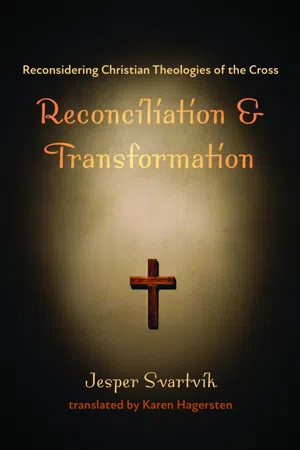![]()
1
Introduction
Every human being is likely to experience moments of despair, need forgiveness, or long for reconciliation and redemption. The dread of not performing well enough, of not sufficing in the eyes of others, of not being worthy afflicts many of us. The questions of sin and shame are universal and therefore shared, though some Christians have taken pains to express them more often than others. This book is about the internal scars we bear in silence.
The message of the forgiveness of sins is one of the dominant motifs in the history of Christian thought, especially in Reformed theology, and perhaps particularly in the Lutheran tradition. It can be described as the theological crown jewel and the most sacred of the sacrosanct in Christianity. “The church is a community constituted by the forgiveness of sins,” writes Haddon Willmer. This line of thought is perhaps most famously and exactingly expressed by Karl Barth when he writes, “There never was and there never can be any true Christian church without the doctrine of justification. In this sense it is indeed articulus stantis et cadentis ecclesiae [the article of belief by which the church stands or falls].”
The need for reconciliation, what Barth calls justification, and the importance of renewal are thus crucial tenets of Christian doctrine. Many people, and not least those of the Lutheran tradition, would probably even be prepared to say it is the very core of the Christian faith. Seeking new perspectives and ways to express them might therefore be seen at first glance as questioning, which can evoke strong reactions. As these are more or less unavoidable questions, it is important to raise them respectfully, in part because they are about something deeply human, and in part because they are ultimately about a mystery, something we can never truly understand, merely anticipate. Fragile and vulnerable though we are, we struggle to grasp these great questions that are so important to us.
A Faith That Seeks Understanding
In Amazement and Anticipation I emphasize the importance of differentiating between the Swedish words betvivla and förtvivla (approximately, questioning and despairing). This applies especially when we speak of reconciliation and renewal. What is one to believe? May a believer doubt? Just as there are different kinds of faith, we can naturally speak of different kinds of doubt. Believers have always questioned and sought answers, which has involved posing critical questions about faith. Anselm of Canterbury (1033–1109) defined theology as “faith seeking understanding” (Latin fides quaerens intellectum). Therefore, it is actually impossible to believe if no questions are posed and no answers sought. The book of Ecclesiastes, observes Hubert J. Richards, would probably never have been included in the Bible if it were considered wrong by definition to ask critical questions:
One of the goals of this book is to review critically and question some of the statements that are often made about the background to and consequences of Jesus’ death; there is good reason to wonder if they are correct and true in all regards.
Salvation or Reconciliation?
What is actually meant by the words salvation, reconciliation (or justification), and redemption? They more or less overlap, but they are not identical, and should therefore not be used as synonyms. The Swedish verb frälsa comes from the word frihalsa, which referred to the physical action of releasing a slave from a slave collar. The Greek word sōtēria and the Hebrew word geulah can also be translated as “salvation” (if used in a religious context) or “rescue” (if a physical action is intended). David F. Ford reminds us that the English word “salvation” comes from salus, the Latin word for “health.” Health can be spiritual, social, political, financial, environmental, mental, or moral. If salvation has to do with God the creator, we cannot disregard any of these dimensions. Ford also refers to what he calls “the three main dynamics of Christian living,” namely (a) worship and prayer; (b) living and learning in community; and (c) speech, action, and suffering for justice, freedom, peace, goodness, and truth. At times, Christian discussion may well have been limited to the first dynamic, but now, as we seek a more holistic perspective, how can it be related to all three dynamics?
In this book, however, the term reconciliation will primarily be used, rather than salvation. There are three reasons for this choice: (a) Firstly, the concept of salvation sometimes carries an escapist content. It was not unavoidable that the word should come to be understood in this way, but unfortunately it has. Often it involves evading rather than receiving. Rather than attempt a rehabilitation of the word salvation, might we not find other words that correspond better to what we want to discuss?
(b) Secondly, there has been a self-centering tendency in the use of the word salvation. The concept of reconciliation, on the other hand, comprises (at least) two parties. Reconciliation can take place between two states, nations, individuals, or, theologically, between God and humanity. Raymond Cohen, an international rel...
